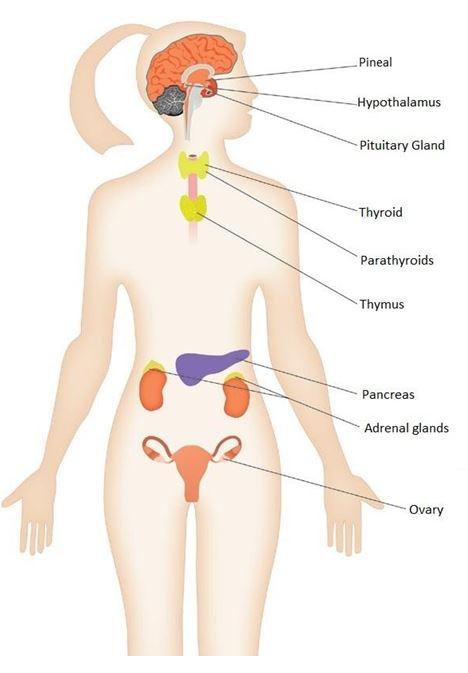Essentials of Anatomy and Physiology for Nursing Practice
Student Resources
Answers to Revise Questions
Define hormones and identify the different types within the human body, giving an example of each.
Ans: In the classical hormone model, hormones are secreted from the endocrine glands, carried in the bloodstream and act on the target organs through latching onto the receptors on the cell membrane or in the nucleus. The three types are:
- Steroid hormones: formed from cholesterol, for example, oestrogen, cortisol.
- Protein/polypeptide hormones: for example, thyroid-stimulating hormone, luteinising hormone.
- Modified amino acid hormones: for example, thyroxine, adrenaline.
Identify the ways in which endocrine secretion is controlled and give examples of each.
Ans:
- Via the hypothalamus and pituitary gland:
- Hormones from the hypothalamus stimulate hormone secretion from the anterior pituitary, for example, TSH (anterior pituitary) a thyroid hormones secretion.
- Nerve impulses from the hypothalamus cause secretion of hormones from the posterior pituitary, for example, ADH.
- Through the influence of factors in the bloodstream, for example, level of glucose in blood stimulates the release of insulin to lower glucose or glucagon to raise it, or calcium levels in blood.
- By nervous stimulation. The adrenal medulla acts as part of the sympathetic nervous system and controls release of adrenaline.
Outline the major functions of the endocrine system and identify how these differ from the nervous system.
Ans:
- Reproduction and sexual differentiation (Chapter 16)
- Development and growth (Chapter 17)
- Maintenance of the internal environment
- Regulation of metabolism
- Nutrient supply
- Stress response
These functions are carried out more slowly than the activities controlled by the nervous system, with the exception of the acute stress response due to the adrenal medulla (functionally part of the sympathetic nervous system).
Describe the role of the endocrine system in the maintenance of homeostasis.
Ans: The Renin Angiotensin Aldosterone Pathway/System (RAAS) plays a major role in regulating the fluid and electrolyte balance. Figure 7.10 shows the different ways in which it functions to adjust fluid intake and reabsorption, and electrolyte excretion or reabsorption.
Label the names of the major endocrine glands shown in the figure below.
Ans:

Identify five organs which all have a range of other functions but which also have endocrine function and identify at least one hormone secreted by each.
Ans:
- Heart: atrial natriuretic peptide.
- Kidneys:
- involvement in Renin Angiotensin Aldosterone Pathway/System (RAAS);
- erythropoietin.
- Adipose tissue: leptin.
- Skin: Vitamin D.
- Gastrointestinal tract (GIT):
- See Table 7.4 Major hormones of the gastrointestinal tract.
Outline how blood glucose levels are regulated.
Ans: See Figure 7.12 Regulation of blood glucose.
Identify the different hormones and their roles in control of growth and development.
Ans:
- Human Growth Hormone (hGH): major role in regulating growth.
- Insulin and IGF-1 (Insulin-like Growth Factor-1): similar structure to growth hormone and involved in growth regulation. Children with inadequate insulin secretion are short in stature (Laron, 2008).
- Thyroid Hormones: necessary for normal growth although they do not initiate growth without hGH; particularly important for development of bones and the nervous system.
- Calcitonin, PTH, Vitamin D: essential for normal calcium metabolism and, thus, for normal growth and calcification of bones.
- Reproductive Hormones: These are necessary for normal development of reproductive organs and secondary sex characteristics of the adult body.
Outline the stress response and the hormones involved. Indicate the importance of understanding this for person-centred practice.
Ans:
- Acute Stress Response (fight or flight response), regulated by the sympathetic nervous system, catecholamines secreted increase blood supply to active organs (e.g. muscle), increases glucose for energy.
- Long-Term Stress Response, ACTH stimulates release of corticosteroids which stimulate supply of glucose (gluconeogenesis), increase blood volume, inhibit inflammation.
- Understanding the concept of stress enables the person-centred nurse to work more effectively with those for whom she is caring, and their families, to improve their physical and psychological state and have significant positive effects on their well-being.
